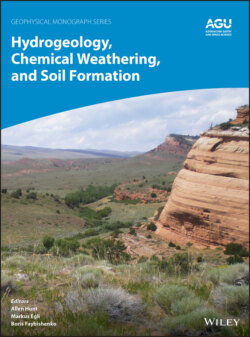Читать книгу Hydrogeology, Chemical Weathering, and Soil Formation - Allen Hunt - Страница 17
1.2.1. Dokuchaev’s Formula for Soil Formation
ОглавлениеVasilii V. Dokuchaev was a Russian geologist turned pedologist who surveyed large stretches of the chernozems underlying the Russian steppes. This work led him to express the view that soil is an independent object and not simply a geological formation; it is a surficial body of mineral and organic substances produced by the combined activity of animals and plants, parent material, climate, and relief (Dokuchaev, 1880, 1883). In taking this view, he rejected the then‐prevalent agrogeological definition of soil, the chemical approach to soil classification, and the agronomic view of soils (Krupenikov, 1992). In their place, he put forward two seminal ideas: (1) that soil is an independent natural body worthy of study in its own right and (2) that five soil‐forming factors determine the course of soil genesis.
Dokuchaev’s original formula for soil formation appeared in an 1899 publication (Florinsky, 2011, 2012; see also Stockman et al., 2011) and read
where П is soil or soil properties, К is climate, О is organisms, Г is parent material, and В is age of the soil. Topography was not included in the expression, most likely owing to a stenographer’s mistake in the original text, in which a discussion of the role of topography preceded the equation (Florinsky, 2012). Using English symbols, Dokuchaev’s equation becomes
This became known as the factorial or state‐factor approach to soil genesis (Table 1.1).
In 1927, Sergey Zakharov, building on Dokuchaev’s work, presented a general soil formation equation in his textbook on soils. In English, the equation reads
soil = f (parent rock material, plant and animal organisms, climate, age of the terrain, topography)
or using symbols:
